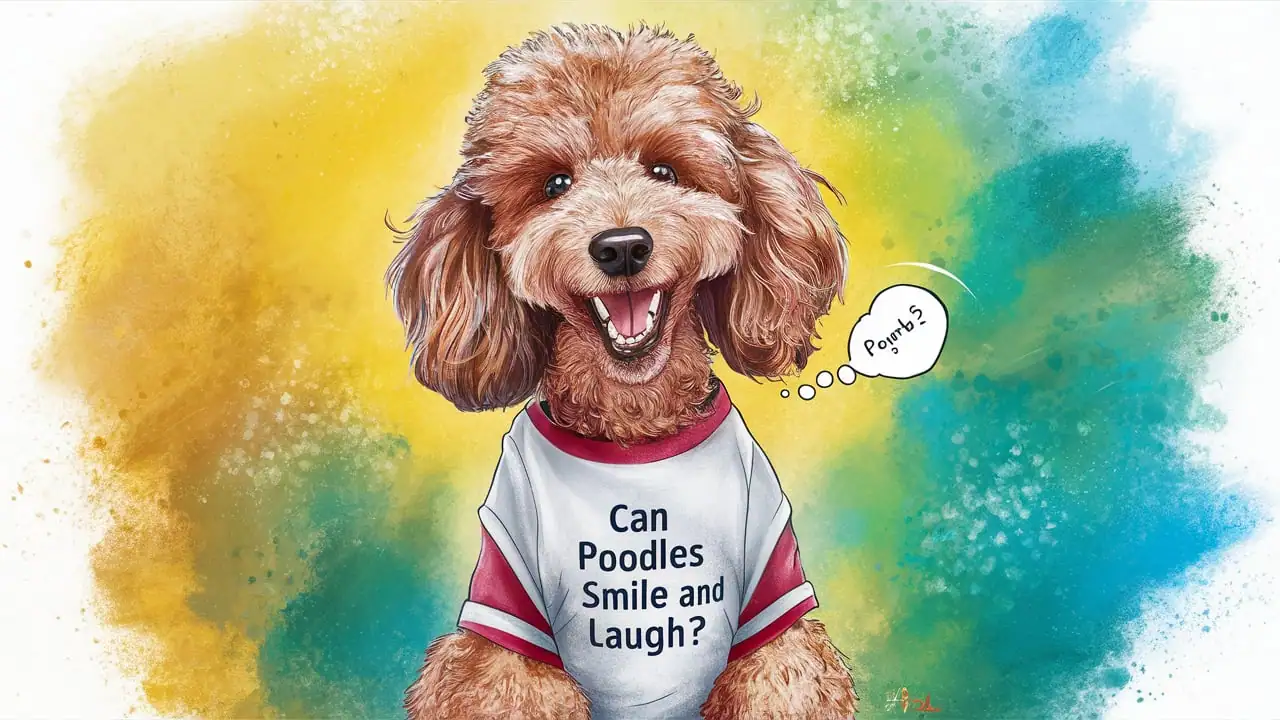While poodles don’t smile or laugh in the same way humans do, they have their own unique and charming ways of expressing joy and happiness. Let’s dive into the fascinating world of poodle emotions and behaviors!
The Poodle “Smile”
What we perceive as a poodle’s smile is actually a combination of facial expressions and body language that indicate contentment and happiness. A poodle may appear to smile when they have:
- A relaxed face
- Bright, alert eyes
- A slightly open mouth with a lolling tongue
- Ears held in a relaxed position
Dr. Sarah Johnson, a veterinary behaviorist, explains, “While dogs don’t have the same facial muscles as humans to create a wide range of expressions, their relaxed, happy face can often be interpreted as a smile by their owners.”
Poodle “Laughter”
Poodles don’t laugh like humans, but they do have vocalizations that can be interpreted as laughter. Poodle “laughter” often sounds like:
- A series of quick, breathy pants
- Short, staccato barks
- A rhythmic, puffing sound
READ:- Do Poodles Bark a Lot?
These sounds are typically accompanied by playful body language and are most often heard during exciting activities or playtime.
Research by Dr. Patricia Simonet at Sierra Nevada College suggests that these breathy pants, which she calls “dog-laugh,” can even be infectious to other dogs, much like human laughter!
How Poodles Express Happiness
Poodles are expressive dogs and show their happiness in various ways:
- Playful behaviors:
- Running in circles or “zoomies”
- Bouncing or prancing
- Bringing toys to their owners
- Body language:
- Wagging tail (often held high and moving in a circular motion)
- Relaxed, wiggly body
- Play bows (front end down, rear end up)
- Vocalizations:
- Happy barks or yips
- Soft whines or mumbles of contentment
- Facial expressions:
- Soft, squinty eyes
- Relaxed jaw and mouth
- Ears held in a neutral or slightly forward position
The Science Behind Poodle Emotions
Recent studies in canine cognition have shed light on how dogs, including poodles, experience and express emotions. Dr. Gregory Berns, a neuroscientist at Emory University, used MRI scans to study dog brains and found that dogs have a level of sentience comparable to that of a human child.
This research suggests that while poodles may not smile or laugh in the human sense, they do experience joy and have developed their own ways of expressing it, adapted to their physiology and social structures.
Encouraging and Recognizing Happiness in Your Poodle
To ensure your poodle has plenty of reasons to “smile” and “laugh”:
- Provide regular exercise and playtime
- Engage in positive reinforcement training
- Offer mental stimulation through puzzle toys and games
- Ensure socialization with both humans and other dogs
- Give plenty of affection and attention
By understanding and responding to your poodle’s expressions of happiness, you can strengthen your bond and ensure a joyful life together.
Conclusion
While poodles may not smile or laugh in the human sense, they have a rich emotional life and their own unique ways of expressing joy. By learning to recognize these signs – from their “smiling” faces to their “laughing” pants – we can better understand and appreciate our poodle companions.
Understanding your poodle’s emotions isn’t just about recognizing happiness; it’s about building a deeper, more fulfilling relationship with your furry friend.
FAQs
Do all poodles express happiness the same way?
While there are common signs, individual poodles may have their own unique ways of showing joy. Pay attention to your poodle’s specific behaviors to understand their personal “happiness language.
Can poodles fake a smile?
Poodles don’t fake smiles, but they can learn that certain expressions please their owners and may repeat them. However, this is more about pleasing their humans than actual deception.
How can I tell if my poodle is truly happy or just excited?
Look for a combination of relaxed body language, soft facial expressions, and calm but joyful behavior. Extreme excitement might look similar but is often accompanied by more frantic movements and higher energy levels.
Are certain poodle varieties (Standard, Miniature, Toy) more expressive than others?
While individual personality plays a larger role, some owners report that Standard Poodles tend to be more overtly expressive, while Toy Poodles might have more subtle cues. However, all varieties are capable of showing a full range of emotions.
